On Maps, the New Renaissance, and Media Literacy: A Response to the Ideas of Chris Kutarna
“It’s the best possible time to be alive, when almost everything you thought you knew is wrong.” – Tom Stoppard
“Societies have always been shaped more by the nature of the media with which people communicate than by the content of the communication.” – Marshall McLuhan
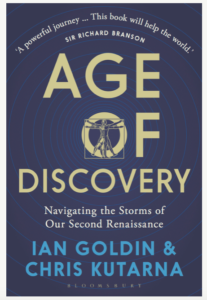 Canadian Chris Kutarna (with Ian Goldin) has made an international splash with the recent book, Age of Discovery: Navigating the Shocks of Our Second Renaissance. Building an image of maps as a central metaphor for understanding change, while drawing on the work of Zigmunt Bauman, Marshall McLuhan and others, Kutarna suggests that we have developed our understanding of the present digital environment using an outdated, print-biased map. Since we misunderstand the nature of our digital world, we therefore miss opportunities to improve our well-being as a society. We need to make mapmaking our core work.
Canadian Chris Kutarna (with Ian Goldin) has made an international splash with the recent book, Age of Discovery: Navigating the Shocks of Our Second Renaissance. Building an image of maps as a central metaphor for understanding change, while drawing on the work of Zigmunt Bauman, Marshall McLuhan and others, Kutarna suggests that we have developed our understanding of the present digital environment using an outdated, print-biased map. Since we misunderstand the nature of our digital world, we therefore miss opportunities to improve our well-being as a society. We need to make mapmaking our core work.
In the book as well as in his TED talk, Kutarna reminds us that the first Renaissance of 15th century Europe flourished largely as a result of the invention of the printing press. 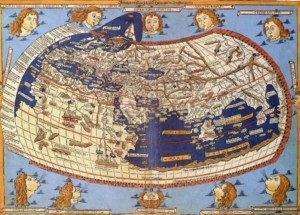 The new mass media empowered revolution, false prophets like Savonarola, new ideas (Galileo), and exploration that flourished with the printing of maps but also brought disease and financial shock. The West experienced withdrawal symptoms as a result of this sudden shift from oral to mass print culture. Knowledge no longer belonged to the elite but was now available to the masses. Understanding the implications of mass-produced ideas warranted a new map, a new paradigm for
The new mass media empowered revolution, false prophets like Savonarola, new ideas (Galileo), and exploration that flourished with the printing of maps but also brought disease and financial shock. The West experienced withdrawal symptoms as a result of this sudden shift from oral to mass print culture. Knowledge no longer belonged to the elite but was now available to the masses. Understanding the implications of mass-produced ideas warranted a new map, a new paradigm for 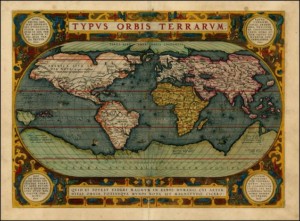 understanding. But this didn’t happen, and the result was anxiety and fear.
understanding. But this didn’t happen, and the result was anxiety and fear.
Kutarna says our digital age marks the beginning of a new Renaissance. AI has placed extraordinary powers into human hands. So how can we best make sense of the moment we’re in? According to Zygmunt Bauman, “that which cannot easily bend will instead snap.” We are co-authors of our own time and it is up to us to usher in the new one. Kutarna asks, “What are the old maps we’re still navigating by?” “Are they still valid in the face of recent events and discoveries?” “What new maps would better describe the world we’re in now?”
The anxiety and fear we feel now is a sign we misunderstand our digital age. We have been wrong about many things: globalization, Trump, democracy… This is because we do not realize, as McLuhan well understood, that we have returned to an oral culture but continue to use a print-oriented paradigm (“map”) to navigate our environment. Our biased print map, for example, inclines us to focus on someone’s prolific communication rather than who they are. Instead we need to ask questions more appropriate to an oral culture: “Who do we want to listen to? Who should we ignore, and why?” We need to be diverted less by WHAT is being said than WHO is saying it. Freedom of speech through the Internet has resulted not in a collective space but one of ‘a caravan park’ in which leaders like Trump provide spectacle, and we are failing to understand our complicity in the condition.
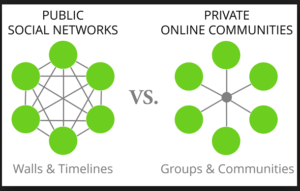
http://bit.ly/2o8KzIC
Kutarna urges us to be less concerned about fixing what we think is wrong with the system, than to pay attention to the societal flaws the system reveals. See, for example, the proliferation of networks vs communities: how can we shift networks into communities that serve the group, not just a lot of individuals? The difference between networks and communities is that individuals belong to communities but networks belong to you. So the individual is privileged in a network, as it is self-serving, but a community serves everyone simultaneously.
But what do Kutarna’s ideas mean for education? What are we afraid of and why?
Parents fear the dominance of communications technologies in the classroom, early years curriculum that focuses on unstructured play rather than acquisition of concrete skills, and social media addiction. These fears rely on an old 19thC industrial map of education, which privileges linearity and hierarchy over organic fluidity.
Educational institutions, through fuzzy buzzwords like “technological fluency” and “global competency”, reveal an underlying anxiety about lack of control of the unknown future. While admirable in their intentions, educational agents who manipulate and market these terms to the classroom and slot them into linear charts and checklists, betray a false assumption that we can manage this frightening new world just as neatly. New territory imposed on an old map:
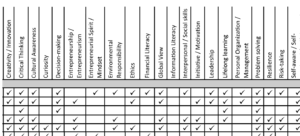
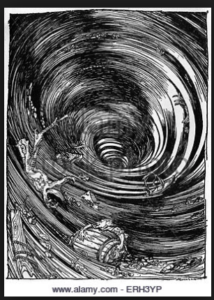 McLuhan used Poe’s sailor in the maelstrom as a metaphor to illustrate how to handle the change he knew would overwhelm us. When a wave of change threatens our ability to understand and intelligently navigate our reality, we must observe its patterns and creatively adapt to them. Media literacy offers the objectivity and understanding we need to become clear and creative. Only media literacy can put us in charge of the digital storm.
McLuhan used Poe’s sailor in the maelstrom as a metaphor to illustrate how to handle the change he knew would overwhelm us. When a wave of change threatens our ability to understand and intelligently navigate our reality, we must observe its patterns and creatively adapt to them. Media literacy offers the objectivity and understanding we need to become clear and creative. Only media literacy can put us in charge of the digital storm.
As a media literacy educator, reading Kutarna prompts me to ask why the current education map grants technological fluency more space than critical thinking ABOUT technology. Perhaps it is more comfortable for us to imagine mastering the manipulation of tools than a deep understanding of unknown territory. But media literacy can help us develop new maps in order to nurture the best society we are capable of – to be our best selves. And we have to be willing to re-draw them frequently to reflect the changing environment. Here are three observations on new maps:
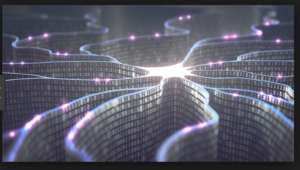
1. The advent of print communication allowed ideas to spread widely and faster, to more and more diverse audiences, than ever before. Today, however, ideas reach across and down, circulating deeply and recursively through infinite audience substrata. Information filters continually through user and producer, so identifying valid and useful content is challenging because it constantly morphs and mutates according to the user. This map is deep and plastic: it can help media literacy learners distinguish that which is merely interesting from what is constructive and valuable because media literacy interrogates user, producer, platform, and source. Image: * https://cina.gmu.edu/projects/best-practices-for-sharing-digital-evidence/
2. The oral culture paradigm is somewhat misleading and should not be taken literally. We are 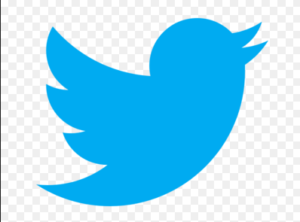 living in a constantly changing hybrid world of print and orality: what is a Tweet, for example? Our map must reflect this composite world of printed and spoken language if it is to be useful. Who is worth listening to and why? How do their words influence through different platforms and why?
living in a constantly changing hybrid world of print and orality: what is a Tweet, for example? Our map must reflect this composite world of printed and spoken language if it is to be useful. Who is worth listening to and why? How do their words influence through different platforms and why?
3. The cohesive networked social map that we idyllically imagined would unite the world does not work because positive, constructive networks take conscious awareness and hard work to construct. We are more entangled than connected today: our map should reflect that so we can learn how to harness technology to build better community. Working with a new map, the media literacy student understands how power can be misused on the Internet; how online “debate, negotiation and compromise between values, preferences and chosen ways of life” (Kutarna) build the best communities for all. Considering specific issues such as cyberbullying, we can ask: “How does this build that person’s power in a good way for all?’ “How can I help that person act and speak from a position of power in the interests of the community?”
This could be a time that threatens to slow us down, causing us to not venture forward, to teach our children how to navigate with caution but warn them only of the dangers – not the joys – of the new world.
As the humans who will inherit the full force of the digital shift, our children deserve our hard work to lay the foundations. We need to think differently, see the patterns not against the old ones – but see them for what they are. It means critically examining patterns in the social effects of digital technologies, and to understand the ways that humans are vulnerable but also powerfully able. If we know little, how exciting is the prospect of all that is there to discover. This is the only way to move forward.
*Source of Featured Image – book cover: Bloomsbury Business
A Descent into the Maelstrom by Edgar Allan Poe. Illustration by Arthur Rackham
*Maps sources: https://en.m.wikipedia.org/wiki/File:Claudius_Ptolemy-_The_World.jpg; https://www.mediastorehouse.co.uk/uig/history/historical-maps/oval-world-map-20165227.html


